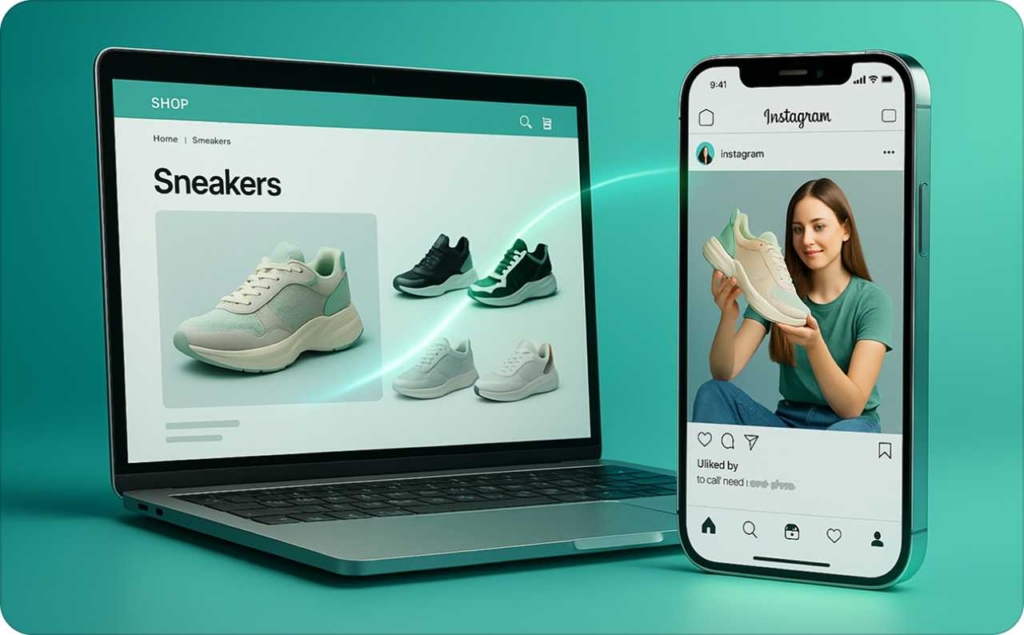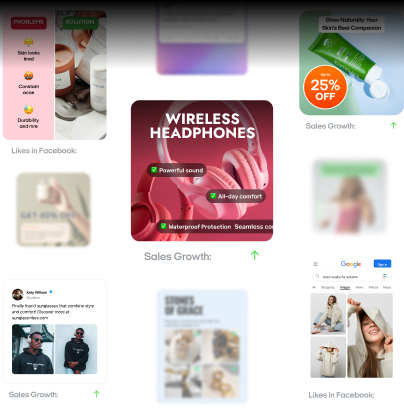UGC vs. Influencer vs. Affiliate marketing: 3 ways to choose best one
Not sure which strategy fits your brand? Zeely AI compares UGC, influencer, and affiliate marketing, revealing three key ways to pick the most profitable path for your goals.
You might feel stuck choosing between UGC, influencer marketing, or affiliate marketing. It’s a common dilemma that can drain your budget and erode trust if you pick the wrong path. With so many platforms and so much content overload, you need a strategy that earns loyalty — not just quick clicks.
This guide compares three key marketing methods to help you align with audience behavior and ROI goals. Instead of treating them as one-size-fits-all tactics, you’ll see how each can suit different business needs.
Some strategies build authenticity and community engagement. Others drive measurable sales. Your choice hinges on your goals, budget, and how you prefer to connect with customers. You can also blend these tactics to amplify results. Many successful brands do exactly that.
User-generated content, such as unboxing videos or posts tagged by real customers, boosts authenticity and trust. Department stores aren’t the only ones leveraging it.
A recent May 2023 survey from Nosto, cited by eMarketer, found that 28.4% of ecommerce marketers in North America consider real-customer images and videos the most impactful content for purchase decisions.
Influencer marketing taps into a niche creator’s built-in audience and credibility. Imagine a skincare influencer walking followers through your product’s benefits. This personal endorsement resonates more than a generic ad could.
Affiliate marketing rewards partners only when they generate a sale or other desired action. Think of a blogger who reviews your product and includes a special link or code. You pay them a commission if, and only if, they bring real results.
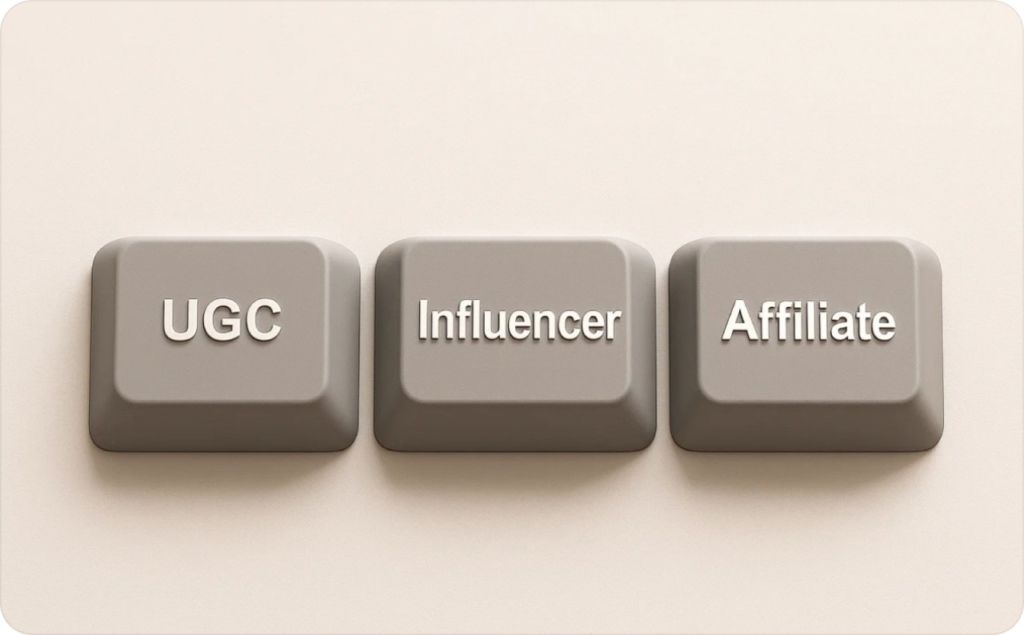
Deep dive into each strategy
You might wonder which path suits you best: UGC, influencer marketing, or affiliate marketing. Each channel targets different goals — authenticity, reach, or trackable sales. Below, you’ll see how they work, what they cost, and when to use them for stronger ROI.
What is UGC — user-generated content?
UGC is content from real customers. They create unboxing videos, tag your brand in photos, or leave honest reviews. It’s raw storytelling that often beats polished ads because people trust real voices more than scripted copy.
Some marketers say that UGC videos can boost ROI and conversions on product pages. That can be huge if conversion optimization is your goal.
Better yet, you won’t need a big budget. Most UGC campaigns rely on community participation. One marketer can handle submissions, run a hashtag, or invite reviews.
The payoff might start in a week or two when you see more engagement, but deeper trust grows over time. Just make sure you give fans simple guidelines so you don’t lose control of your brand voice.
Place user content near your “Buy” buttons to encourage immediate clicks. Repost top submissions on social media or email newsletters to highlight brand loyalty.
If you want to build authenticity without heavy overhead, UGC is your go-to. Stay consistent in how you ask for content and guide creators gently. You’ll see a real sense of community emerge.
What is influencer marketing?
Influencer marketing partners you with creators who already have an engaged following. They post about your product in stories, videos, or reels, giving you a trusted endorsement instead of a stiff ad. That “borrowed credibility” works because people trust the influencer’s judgment.
According to Sprout Social, 86% of US marketers plan to team up with influencers by 2025, showing just how essential these collaborations can be.
Micro-influencers might cost only $100–$500 per post but often see strong engagement rates. That’s ideal for brands with smaller budgets or niche markets.
Expect traction in about 7–14 days if you measure clicks or direct sales. Repeated exposures build long-term impact. You’ll need at least one person to handle outreach, negotiate influencer compensation, and track performance.
Make sure you set clear goals for brand love, conversions, or both. If you spot a winning campaign, scale it fast or experiment with new creators.
Remember to treat influencers as brand ambassadors, not ad placements. Share real metrics so they know what’s working. With this approach, you’ll learn where to invest more time and money — and which channels deserve a pivot.
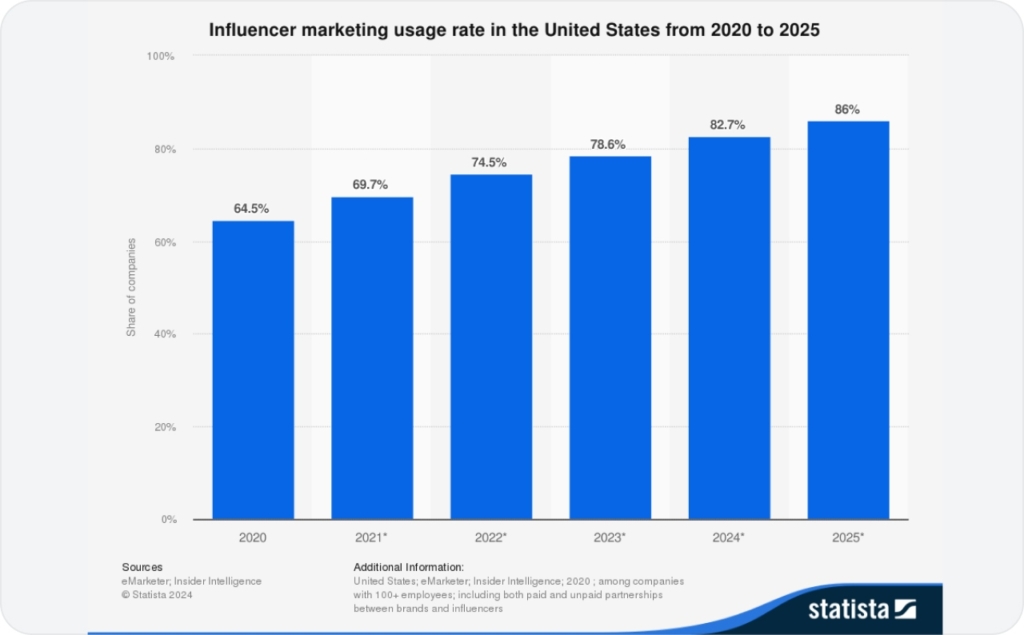
Photo source: Statista
What is affiliate marketing?
Affiliate marketing is a pay-for-results approach. You partner with bloggers, podcasters, or even influencers who promote your product using trackable links.
Whenever someone buys through that link, you pay a commission. It’s highly scalable and perfect for businesses focused on measurable growth.
Some merchants say 20–30% of their total revenue comes from top affiliates. You can start small by onboarding 10 affiliates and ramp up to hundreds as sales grow.
It usually takes 30–60 days for affiliates to get familiar with your brand and build consistent results, but once they do, they can become a major revenue driver.
You’ll need commission tracking tools and clear rules against affiliate fraud. Keep an eye on partners who might misrepresent your brand.
If everything checks out, keep refining your commission strategy to reward top performers and weed out underperformers. It’s a win-win: affiliates earn money by recommending products they already like, and you only pay when you see real sales or leads.
Which strategy is right for you?
Deciding on UGC, influencer marketing, or affiliate marketing depends on your goals, budget, and resources. UGC video ad types work best if you want fast social proof and lower costs.
Influencer marketing brings rapid reach and credibility. Affiliate marketing fits if you prefer paying only for converted sales.
You don’t have to choose just one. Combine UGC’s community-driven content with influencers’ reach. Or add affiliates into the mix to scale your sales funnel. Each option can boost the others if you have the bandwidth to manage them.
Up next, we’ll compare these strategies head-to-head on cost, ROI, and content control so you can see exactly where they overlap — and how they differ.
Side-by-side comparison: Evaluating strategies
You want to pick a digital marketing strategy that fits your goals. UGC, influencer marketing, or affiliate marketing can each drive growth, but they tackle different needs. This guide helps you see how they compare in cost, content control, ROI, and reach.
If you want to build brand trust fast, try UGC video ads. If you need wide exposure, influencer marketing could be your solution. If you prefer paying only for results, affiliate marketing is your answer.
Compare digital marketing models by ROI, engagement, and complexity
Below is a quick table to help you decide which path to follow. It also highlights risks like affiliate fraud and influencer mismatch. Once you understand the basics, you’ll see how to combine these strategies for even better results.
Comparison table: UGC vs influencer vs affiliate marketing strategies
| Factor | UGC | Influencer marketing | Affiliate marketing |
| Payment model | Typically free or based on small rewards or contests | Flat fee, commission, or hybrid | Commission-only, pay per sale/lead |
| Audience reach | Organic, limited to your existing community | Potentially large — depends on influencer’s follower size | Varies — depends on each affiliate’s traffic |
| Content control | Low — users create content, very authentic | Medium — negotiated with each creator | Medium — brand rules, but affiliates have freedom |
| Authenticity | High — peers trust peers | Medium to high if brand and influencer share values | Moderate — messaging is more about conversions |
| Engagement rate | Can be strong with active fans | Often 3–6% for micro-influencers, can exceed 5% in niche cases | Lower engagement, but higher conversion intent |
| ROI potential | Builds over time; reuse UGC in ads or product pages | Can spike quickly if you choose the right influencers | High and trackable, many see 3–6x ROAS — return on ad spend |
| Setup complexity | Low — start with hashtags or review prompts | Medium — outreach, contracts, and quality checks | Medium — tracking software + fraud protection required |
| Typical duration | 1–2 weeks to gather content, but trust grows over months | 2–4 weeks for initial campaigns, then ongoing if successful | 4–8 weeks to onboard affiliates, then continuous |
| Risk/limitation | May lose brand tone if you over-curate or under-curate | Results vary if influencer’s followers don’t match your market | Affiliate fraud or misaligned promos can hurt your brand |
Strategy differentiation: UGC vs. Influencer vs. Affiliate
Each channel — UGC, influencers, and affiliates — excels at different parts of your funnel. Here’s how they differ in cost, speed, and ultimate impact on your brand’s marketing goals.
UGC: Real customers, real results
UGC is created by real users that bring raw authenticity to your brand. Early engagement often appears within one or two weeks, but deeper community trust takes months to form.
Brands that excel at UGC build organic loyalty and cut down on pricey ad creative. Content control is the main challenge since customers speak in their own voice. Light guardrails — like hashtags or style references — help keep user posts on-brand without killing the authenticity. To create UGC videos, try Zeely AI ad generator. An application with realistic avatars will help create quality content.
Expert tip: Track engagement to see how evolving user trust leads to higher repeat purchases.
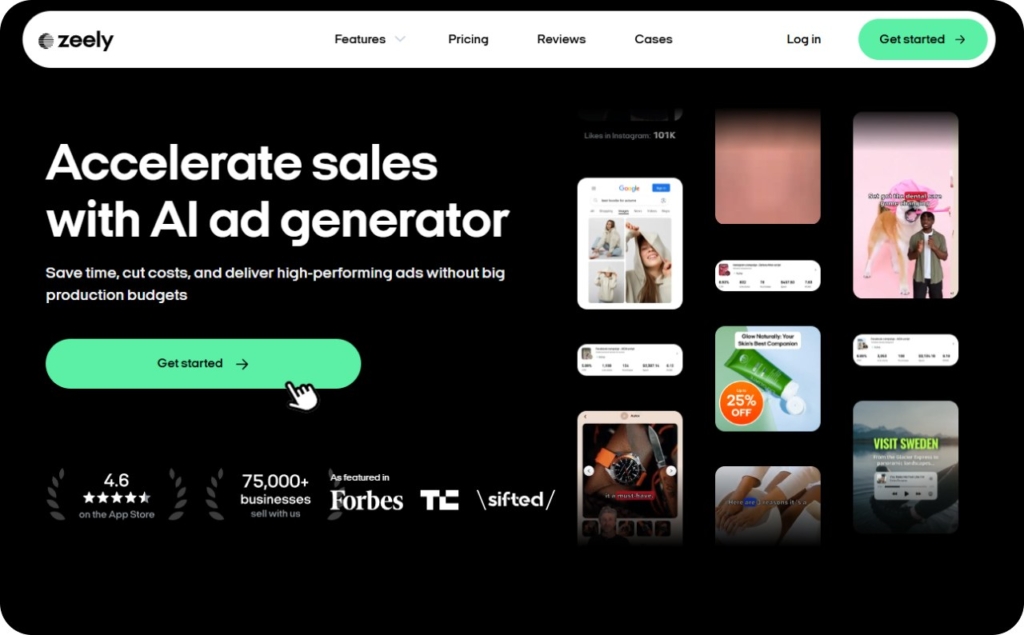
Influencer marketing: Rapid reach and trust hacking
Influencer marketing delivers fast exposure thanks to creators with built-in credibility. Whether they’re macro-level celebrities or micro-level niche experts, they introduce your brand to an audience that already trusts them.
It’s crucial to do deep vetting. Look at past content quality, real engagement (not bots), and alignment with your brand values. Tools like Aspire or Upfluence pinpoint influencers who match your audience. For performance, monitor direct conversions, like link clicks or codes redeemed, so you know you’re getting measurable returns.
Expert tip: Consider a CPA or CPE model if you want tighter cost controls. That way, you pay mainly for actual acquisitions or engagements, not vanity metrics.
Affiliate marketing: Performance-driven sales at scale
Affiliate marketing follows a pay-for-performance logic, where you only pay commissions if a sale happens. This keeps your risk low and rewards partners who truly generate value. Top affiliates can produce 20–30% of a brand’s online revenue, especially in fashion, fitness, beauty, or tech verticals.
Platforms like ShareASale, Impact, or Everflow handle tracking and payouts. They also include fraud-detection features, which matter as you scale. Shopify data shows the affiliate industry could grow by 18.86% annually, hitting $40 billion by 2032 — so building a network now can future-proof your revenue.
Pro tip: Offer tiered commission rates to top affiliates. It keeps them motivated and loyal, particularly when they see the benefits of selling your product over a competitor’s.
How to decide and when to combine
With three strong tactics on the table, choosing which to start with can feel overwhelming. Here’s how to pick a lead strategy and how to stack them without overloading your funnel.
Picking a lead strategy
If your brand is community-driven or you have minimal budgets, UGC is a logical first step. If you need fast market awareness, lean on influencers. If you want pay-for-performance conversions, anchor your campaign in affiliate marketing.
Most brands, however, multiply their impact by stacking channels. You might roll out a new product with influencer buzz, back it with UGC from real customers, then drive final sales through affiliate links.
Staggering your timeline
Gather UGC a few weeks in advance by nudging early adopters or loyal fans. One week before launch, have influencers tease your product or brand. At launch, turn affiliates loose with discount codes or specialized landing pages. This sequence keeps your creative fresh and ensures you’re not bombarding the same audience with identical messages all at once.
Maximize synergy: Practical integration tactics
Even the strongest channels can underperform if you run them in isolation. These practical tips ensure each tactic strengthens the others for seamless multi-channel success.
Combine UGC, influencers, and affiliates
- Embed UGC in influencer posts: Authentic user content adds proof to an influencer’s endorsement
- Provide UGC libraries to affiliates: Curated user photos help affiliates boost CTR and AOV
- Retarget with mixed creatives: Show site visitors influencer quotes, affiliate offers, or user testimonials to reinforce your funnel
By mixing the right creative assets, you sustain interest, highlight social proof, and appeal to different decision triggers in potential buyers.
Measure holistically
Set up multi-touch attribution or advanced analytics to understand how each channel contributes at different funnel stages. It’s not always about which channel “closed” the sale, but how your layered approach built awareness, nurtured interest, and sealed the deal. Pay attention to synergy signals like lower CPA, higher conversion rates, and deeper user engagement across platforms.
Expert-level considerations
Integrating UGC, influencers, and affiliates takes more than a few platform sign-ups. Here are advanced insights to ensure your strategy scales while keeping brand voice and performance in sync.
Brand ambassadors & beyond
Elevate top influencers or affiliates into brand ambassadors who get commission plus exclusive perks. Offer them product bundles, early access, or co-branded merchandise. When they feel truly invested, they become the face of your brand, bridging influencer reach with affiliate-style revenue.
Community moderation for UGC
If UGC is a pillar, establish a formal moderation process. You might lightly edit captions or create a submission form that prompts users for details. This ensures the content stays on-brand and resonates with your broader marketing.
Regional scaling
As you expand, local influencers or affiliate networks help you enter new markets seamlessly. Tailor your main brand story to local language cues, cultural references, or popular hashtags.
Final thought
No single channel covers the entire journey from discovering a product to buying it. By blending UGC, influencer marketing, and affiliate marketing, you create an authentic, multi-touch experience that supports users from initial awareness to final sale.
This synergy also protects your brand from overreliance on one platform or audience. Once you master each strategy and find the optimal blend, you’ll see higher ROI, more engaged communities, and a funnel that grows stronger with every campaign.
Conclusion and next steps
You’ve explored how UGC, influencer marketing, and affiliate marketing each serve a unique role. Now it’s time to combine them into one cohesive strategy that drives ROI and cuts CPA.
Integrating these channels can lower acquisition costs by up to 25%, because every platform supports the same narrative. You can do it by crafting one theme, staggering your messaging, and tracking performance from a single dashboard.
Suggested steps
First, decide on a clear goal: do you want more trust, broader visibility, or direct sales? Next, choose your lead tactic — like UGC if your audience loves real stories, or affiliate links if you’re aiming for conversions.
Then map your rollout. Start UGC two weeks ahead to build credibility, activate influencers one week out for final hype, and let affiliates earn revenue at launch. Keep track of your CTR, ROAS, and new user interactions each week.
If you’re a lean team, use free tools like Google Sheets for sign-ups or Bitly to track influencer links. As you see results, invest in platforms like GRIN, Impact, or Upfluence to scale further.
Quick wins to start now
Ask a few loyal customers for honest feedback. DM two micro-influencers who fit your brand. Set up one affiliate link and monitor clicks. You’ll gather real data to refine your strategy without overwhelming your budget.
Final thought
You have a clear roadmap: combine UGC for authenticity, influencers for exposure, and affiliates for measurable revenue. By merging their strengths, you’ll unify your brand voice, delight your audience, and see continuous growth without burning out your team.
If you need inspiration, look at how brands like Glossier or Gymshark merge these tactics flawlessly. Their results prove that multi-channel execution wins when every channel tells the same story.
Also recommended

